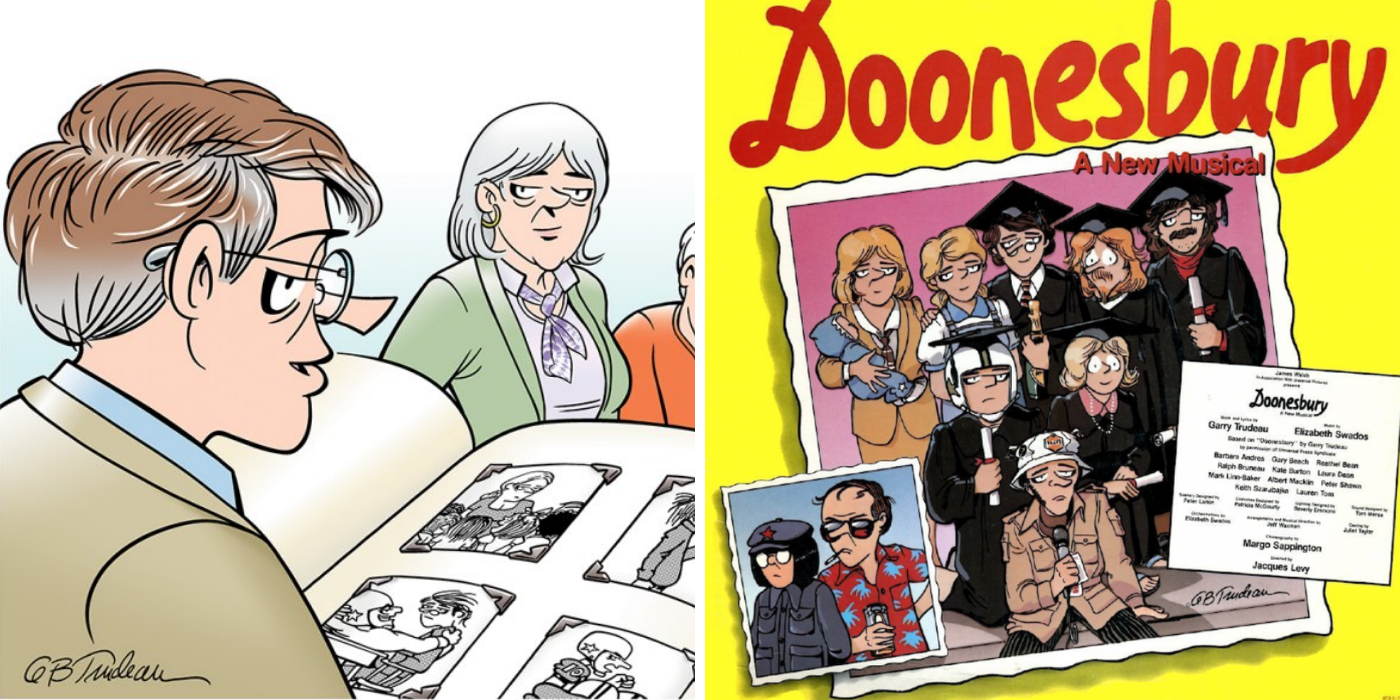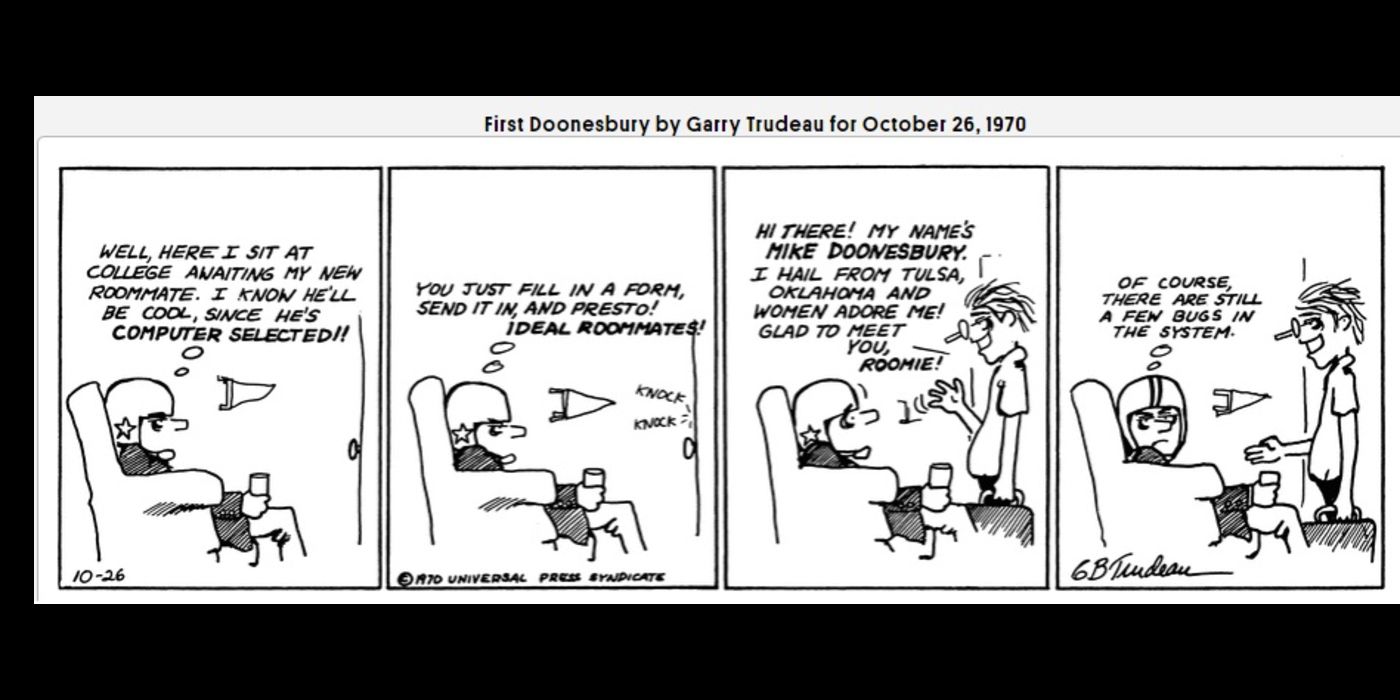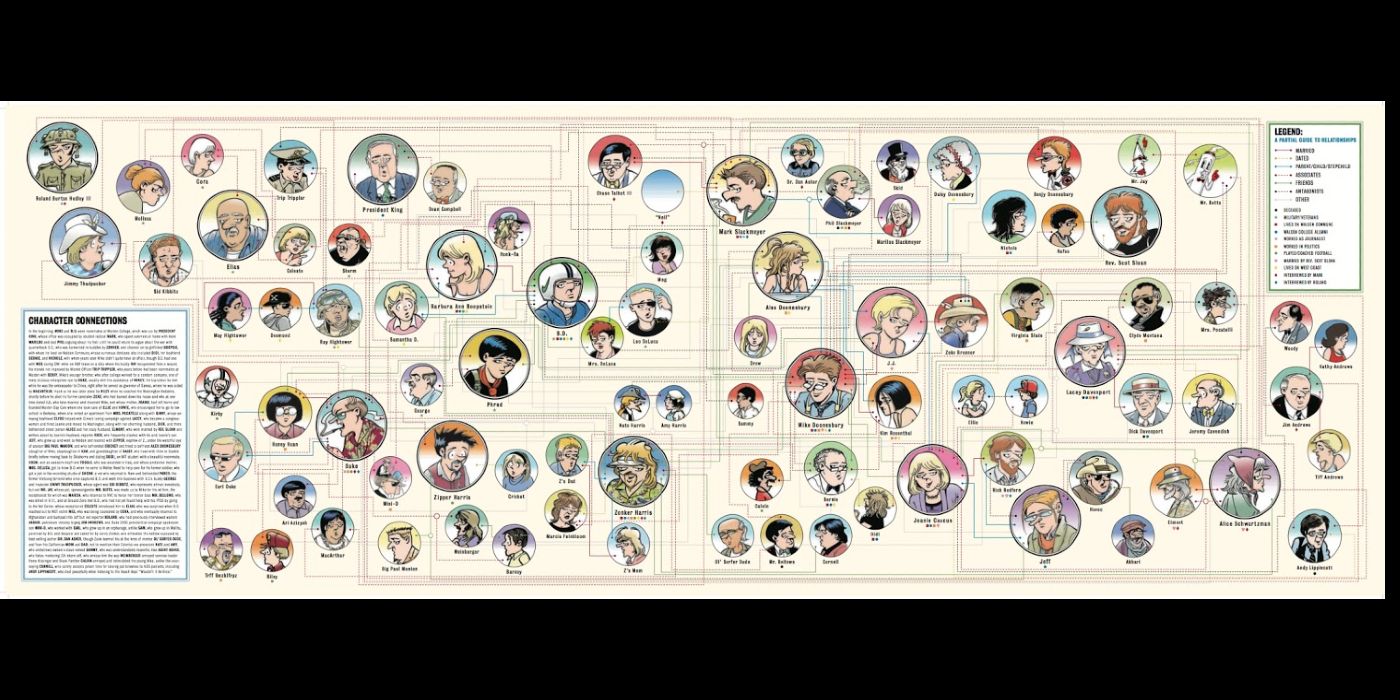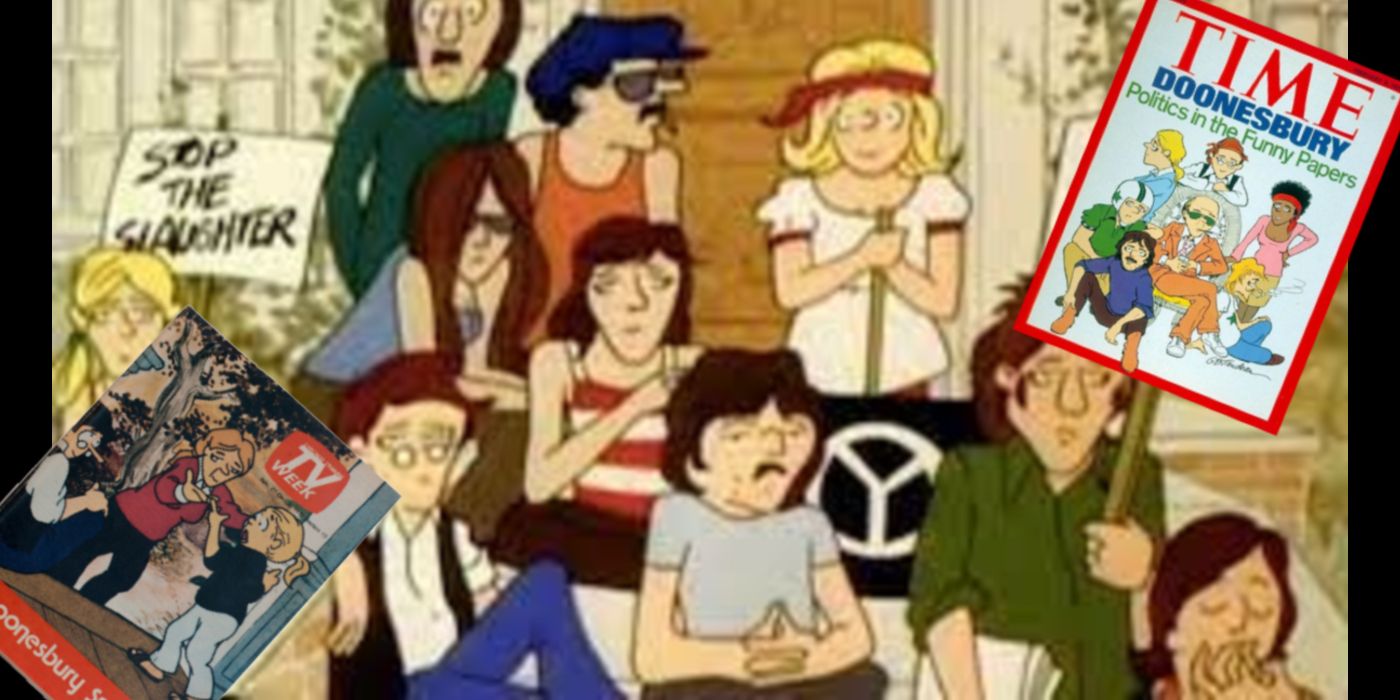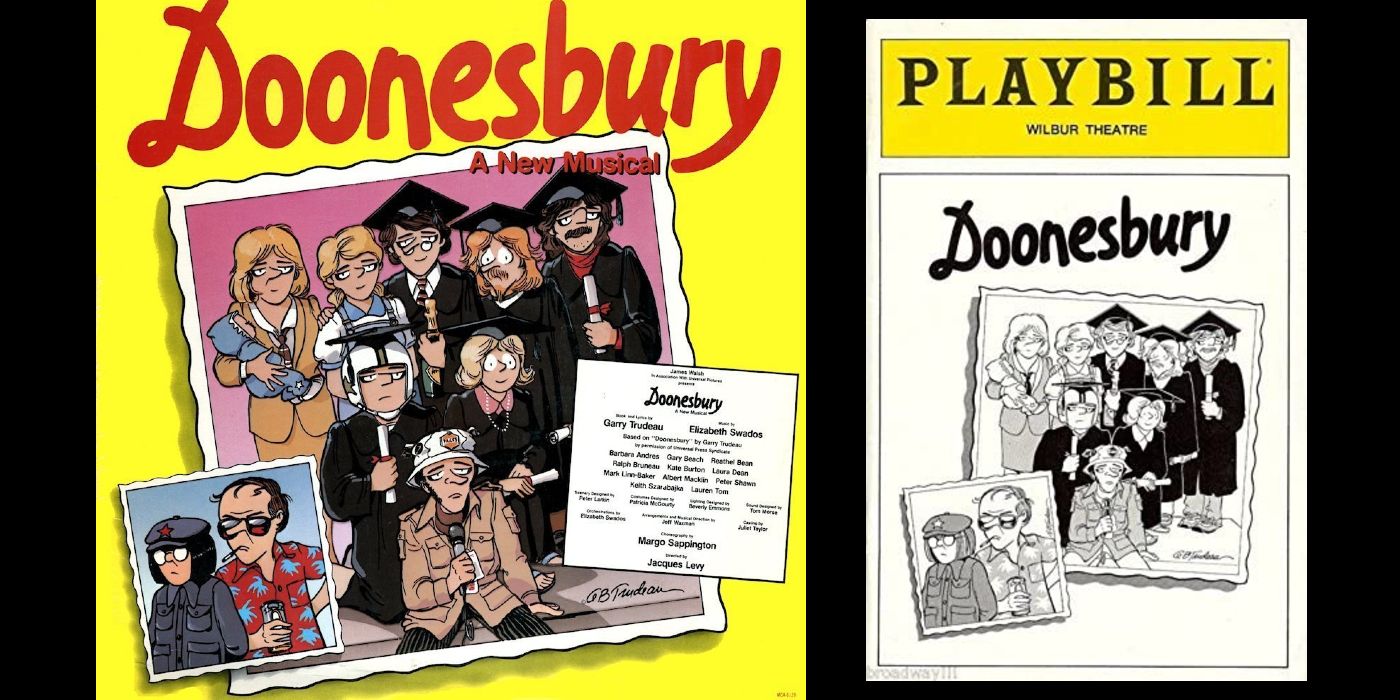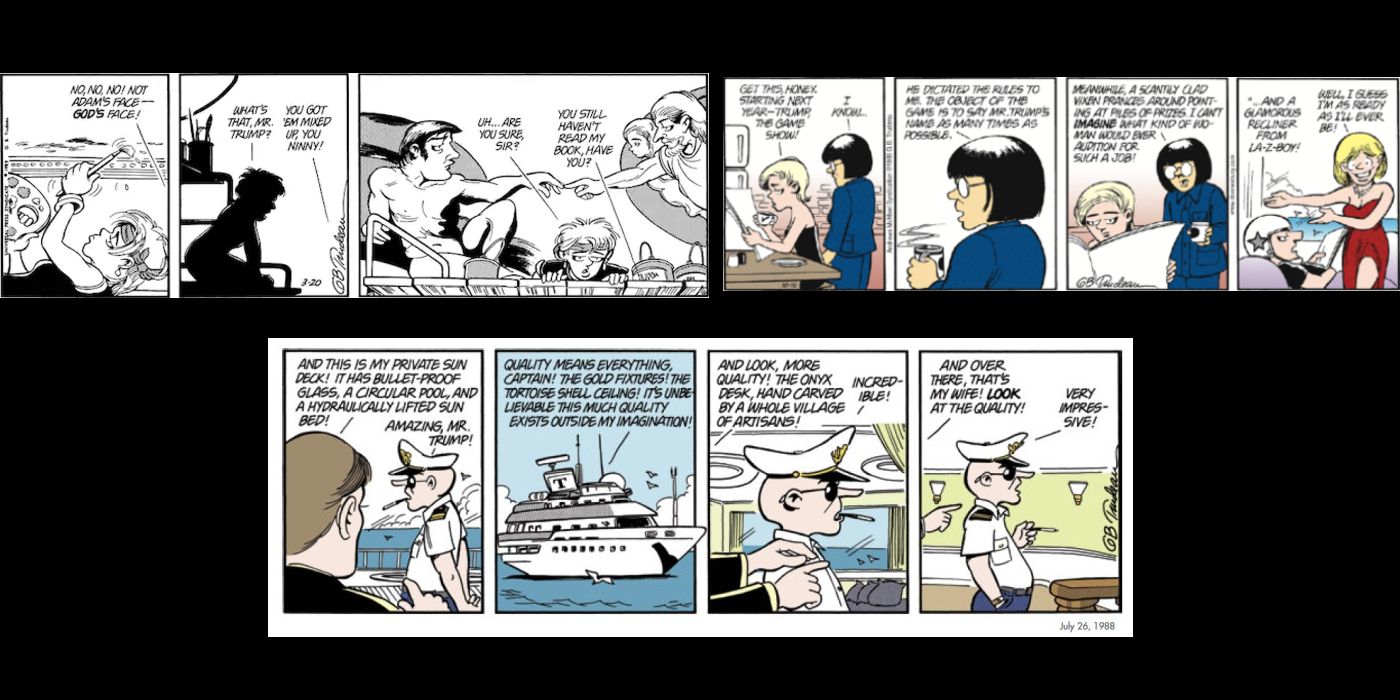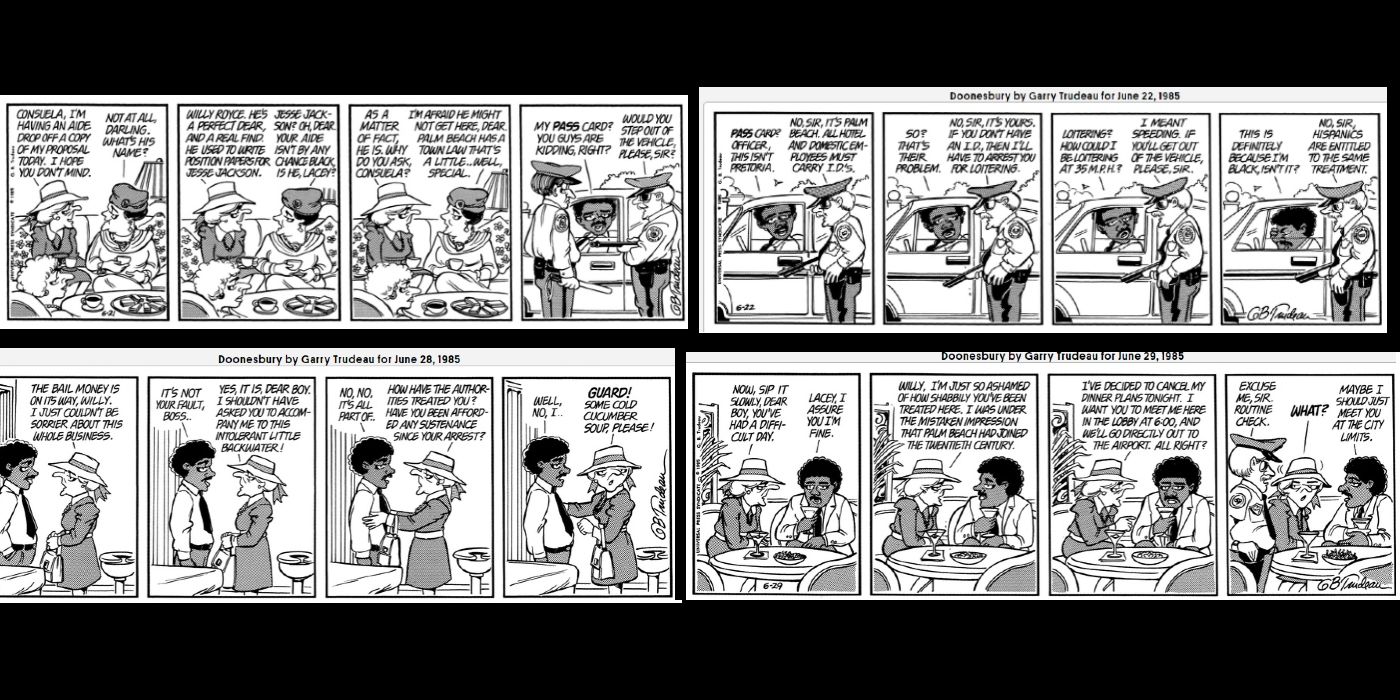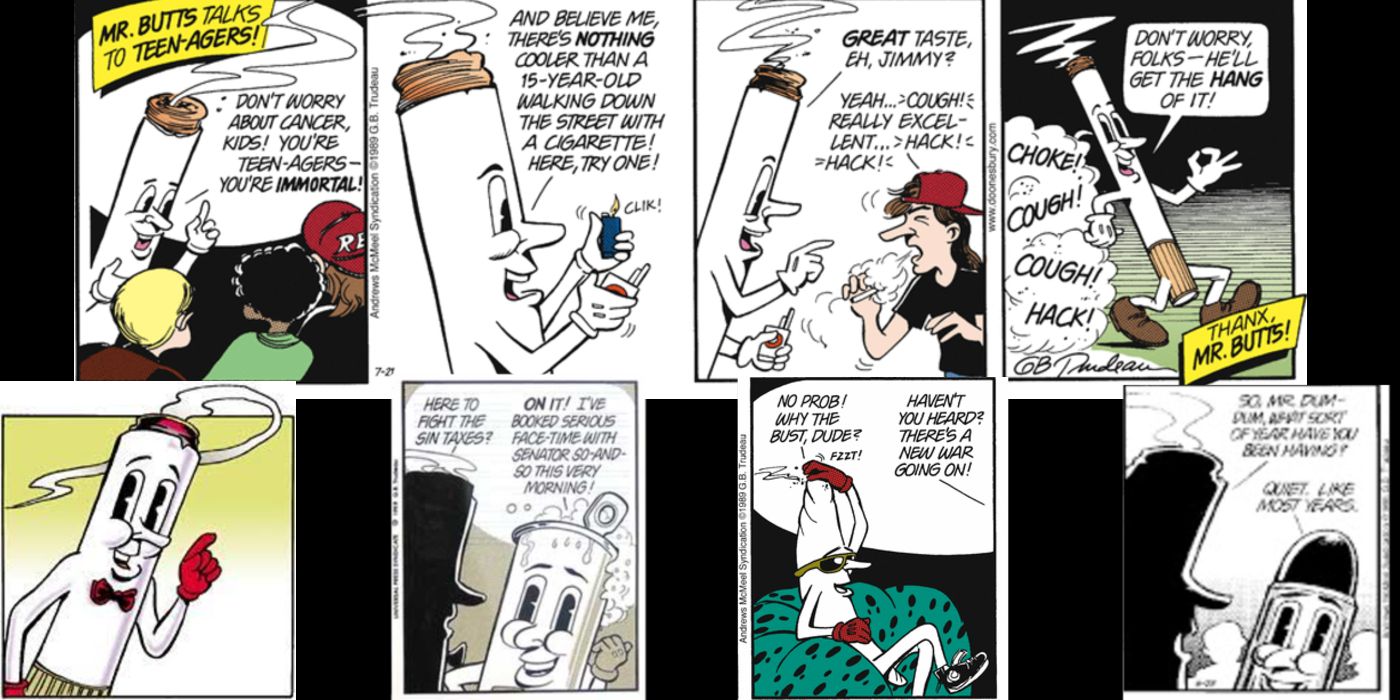Doonesbury by Garry Trudeau is one of the great comic strips that stand apart from other newspaper comic strips. Chronicling Michael Doonesbury's life along with his friends and family, the strip is part humor and part commentary on an ever-changing society.
For over 50 years, the strip, a creation of the counterculture era, has remained relevant and continued to stand apart from other newspaper comics. Not only have the main characters grown and aged, but so too has the strip, maturing and growing along with its cast.
10 Doonesbury Was The Continuation Of Trudeau's College Newspaper Strip, Bull Tales
Doonesbury first debuted in October of 1970 and was a continuation of Bull Tales, a strip Trudeau created while a Yale University student. Bull Tales was a part of the student newspaper, the Yale Daily News, from 1968 to 1970, focusing on local campus events and issues happening on the University's campus.
Doonesbury was one of the first daily strips from Universal Press Syndicate, now the world's largest independent press syndicate. Initially appearing in twenty-eight newspapers, and by the mid-2010s could be found worldwide in approximately 1,400 newspapers.
9 Over The Span Of 50+ Years, The Strip Went From A Handful Of Characters To Generations of Families
Trudeau came up with the name for the strip by combining the word 'doone,' prep school slang for a clueless, inattentive, or careless person, which he then combined with the surname of his college roommate Charles Pillsbury. Michael Doonesbury is the strip's main character whose story begins as a college student and follows his life until he is a youthful senior citizen.
He is joined by a menagerie of characters such as Zonker Harris, Mark Slackmeyer, Nicole, Bernie, and DiDi, who, along with Doonesbury, moved into a commune together after leaving Walden College after the strip's first 12 years. Over the years, a cast of secondary characters would join, giving the strip a cast of 24 reoccurring characters, with more who would then follow over the years.
8 Doonesbury Was The Recipient Of Many Prestigious Awards & Accolades
Doonesbury, known for its social and political commentary, also won a few awards, such as the Pulitzer Prize. In 1975, Trudeau won the Pulitzer for Editorial Cartooning for the 1974 "Stonewall" strip, a commentary on the Nixon Watergate scandal, and was among the nominees in 1990, 2004, and 2005.
Two years later, Trudeau wrote, produced, and directed a 26-minute animated Doonesbury Special, which aired on NBC on November 27, 1977, leading to it winning a Cannes International Film Festival Special Jury Award for Best Short Film and a nomination for Best Animated Short Oscar in 1978. The strip's other awards include the National Cartoonist Society Newspaper Comic Strip Award, the US Army's Commander's Award for Public Service, and the Reuben Award from the National Cartoonists Society in 1995.
7 Trudeau Took A Hiatus From The Strip & Turned Doonesbury Into A Broadway Musical
During the early '80s, Trudeau took a 22-month hiatus from his work on the Doonesbury strip but not from Doonesbury itself. During this time away from the strip, Trudeau helped create a Doonesbury Broadway musical, where the characters, who were eternal college students, would graduate from college. Opening at the Biltmore Theatre on November 21, 1983, the show ran for 104 performances featuring music composed by Elizabeth Swados, who set Trudeau's book and lyrics to music.
In 2014, he took another short break from the strip to focus on Alpha House, a political comedy picked up by Amazon Studios for a two-season run. In 2014 Trudeau stopped creating new daily Doonesbury strips, running old strips Monday through Saturday, with new strips on Sunday.
6 The Characters Of The Strip Aged In Real-Time Unlike Most Comic Strips
When Trudeau returned to the daily strip following the Broadway musical, the characters who before had aged only slightly began to age in real-time. The main characters would leave college and start their careers in various fields commonly associated with the baby boomer generation, such as advertising jobs, joining law enforcement, and trying to cash in on the dot-com boom.
The strip also mirrored the generational views on current events through both original characters and younger, secondary characters as they were introduced. During the course of the strip, one character died of a heart attack; one died from Alzheimer's, another from AIDS, and one from old age.
5 Trudeau Was Unafraid To Make Fun Of The Most Powerful Man In the U.S., Regardless Of Political Party
In the 50-plus years Doonesbury has been around, it never shied away from addressing highly political issues or taking on political figures. When Trudeau began including strips featuring the President, dialogue coming from the inside, with the establishing shot being an external view of the White House, represented the President speaking. When Ronald Reagan took office, Trudeau began using symbols he felt representative of some aspect of the President's character, as stand-ins for the real person.
Reagan was a computerized-copy while George H.W. Bush was represented as an invisible point of light. George W. Bush was also represented as the same invisible point but with a Stetson hat as a candidate, later becoming a giant asterisk once elected. A waffle symbolized Bill Clinton, and a bomb, sometimes lit but unexploded, represented Newt Gingrich, and a floating feather was the stand-in for Vice President Dan Quayle.
4 Uncle Duke Was More Than A Caricature Of Hunter S. Thompson
Uncle Duke, Zonker Harris' uncle in name only, first appeared in the strip for the first time in 1974, as a caricature of Hunter S. Thompson, the gonzo journalist. When asked his thoughts on being the inspiration for the character, Thompson said that nobody, including him, wanted to grow up to be a cartoon character, stating numerous times that the character cost him anonymity as a journalist and privacy as a citizen.
Unlike Thompson, Duke has a long track record of ill-fated ventures in politics, business, and crime. He also ran a medical school, a bar in Kuwait, served as an ambassador to China, and was a 'mayor' in Iraq.
3 Trudeau Took On Donald Trump Long Before He Was Elected President Of The United States
Since the late '80s, Doonesbury has taken on Trump's rhetoric and various ventures well before he entered the political area. In 1987, Trudeau ran a series of strips where Donald Trump ran for the office of President and explored what a Trump presidency might resemble.
In fact, three of the strip's characters at one time worked for Trump. J.J. reluctantly painted a mural of Trump based on the Sistine Chapel, on the ceiling of the bathroom of Trump's boat "Trump Princess" because she needed the money. It was also during this time that Duke was the Captain of the ship as he saw Trump as a kindred spirit. Boopsie was hired to be in the background of a game show Trump created about himself, years before The Apprentice.
2 The Doonesbury Comic Strip Played A Role In Forcing Palm Springs' Officials To Change A Discriminatory Law
In 1985, Palm Springs, in Orange County Flordia, repealed a 60-year-old ordinance that required domestic employees to carry a passcard ID and be fingerprinted before entering the city limits. Since many of the domestic employees were persons of color, the ordinance was viewed by many as discriminatory and racially biased.
Recognizing this as an unfair practice, Trudeau ran a week's worth of strips spoofing the law and the effect that it could have on people. Soon after the strips ran, the Orange County Commission repealed the law with the "Doonesbury Bill," which prevented local governments from requiring identification cards or background checks.
1 Doonesbury Featured Mr. Butts, & His Anthropomorphic Friends Represented The Political Lobbies
Along with his human characters, Doonesbury features some anthropomorphic characters as representations of certain political lobbies. An eight-foot-tall talking cigarette with a goofy smile named Mr. Butts was Trudeau's way of personifying the tobacco industry in the strip.
Initially appearing in Mike Doonesbury's dreams, Mr. Butts soon became a real person who would interact with other characters and testify before Congress on behalf of the former Tobacco Institute. Mr. Butts is joined in the strip by Mr. Jay, a large joint, Mr. Dum Dum, a bullet personifying the NRA, and Mr. Brewski, a personification of the liquor industry. These characters are usually seen breaking the fourth wall, addressing the reader directly to tell them "good news" about their industry.

